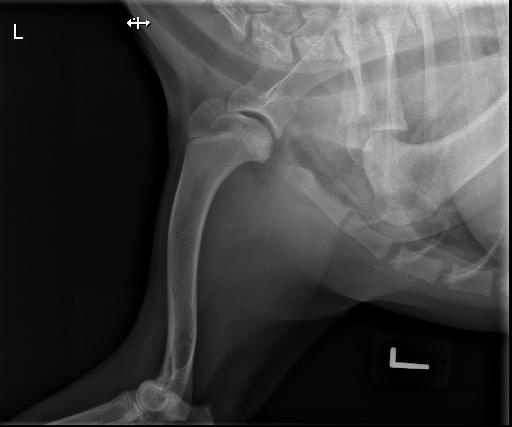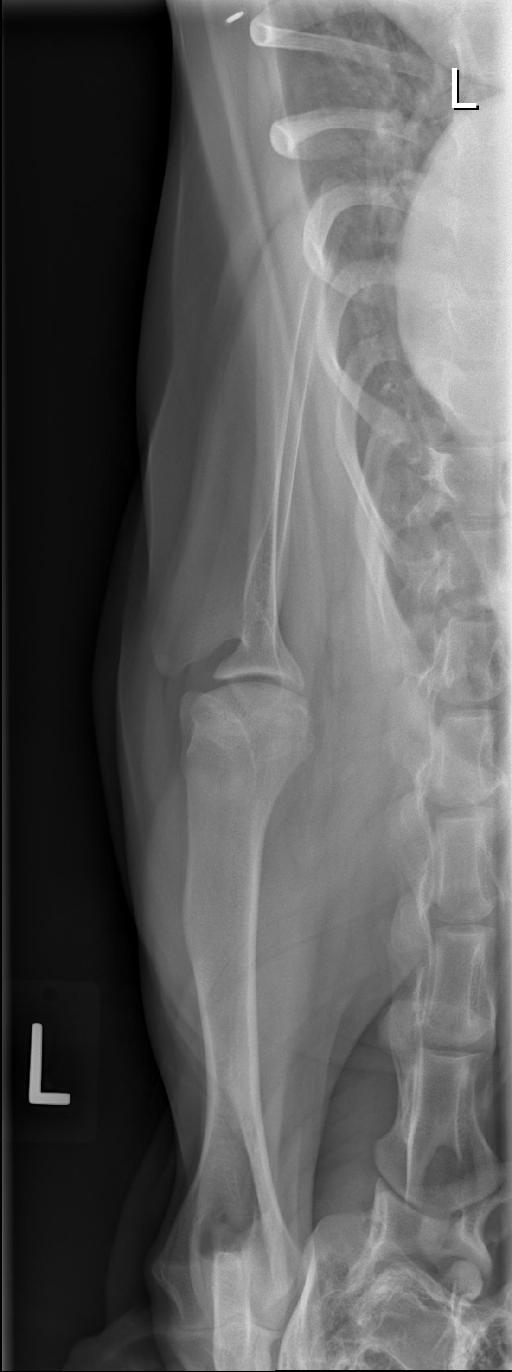OCD shoulder
Publication Date: 2015-03-23
Details
Service Radiology
Modality: Radiographs
Species: Canine
Area: Limb
History
1 year old male Irish Setter, pre-anesthetic radiographs before neutering
2 images
Findings
Orthogonal radiographs of the thorax are available for interpretation.
Overall the pulmonary parenchyma and cardiovascular structures are considered to be within normal limits for the age, breed, and body condition score of the patient. In the cranial abdomen, there is a moderate amount of radiopaque material noted within the lumen of the pylorus and proximal duodenum, this is consistent with the reported administration of pepto-bismol. Most appreciated on the lateral projection, there is flattening of the caudal edge of the left humeral head [caput humeri]. An osseous fragment is not visualized within the joint space.
Impression: 1. Overall radiographically normal thorax. 2. Osteochondrosis of one of the left humeral head. For further evaluation Orthogonal radiographs of the shoulder could be acquired.
Further imaging


Diagnosis
Osteochondrosis of the left humeral head.
Notes
Osteochondrosis is a common cause of lameness in young rapidly growing, large breed dogs. Clinical signs usually develop between 6 and 9 months of age . Osteochondrosis occurs from epiphyseal cartilage necrosis resulting in a failure of normal endochondral ossification. When a chondral or osteochondral fragment separate from adjacent subchondral bone, the disorder should typically be referred to as osteochondritis dissecans. However, in most patients, determination of whether cartilage fragment exists is impossible from survey radiographs; thus osteochondrosis is an acceptable stem. Common sites of OCD in the dog include: caudal aspect of the proximal humeral head, distal medial aspect of the humeral trochlea, lateral and medial femoral condyles, femoral trochlea, and the medial and lateral trochlea ridges of the talus. Ostochondrosis is frequently bilateral, but affected animals may have clinical signs in one limb only.